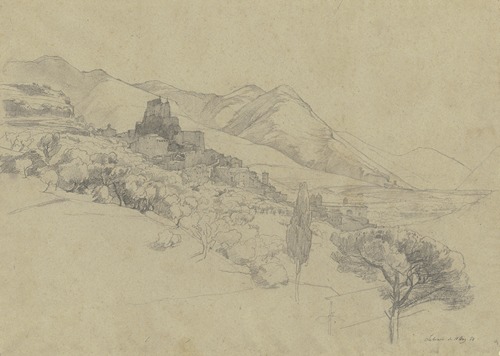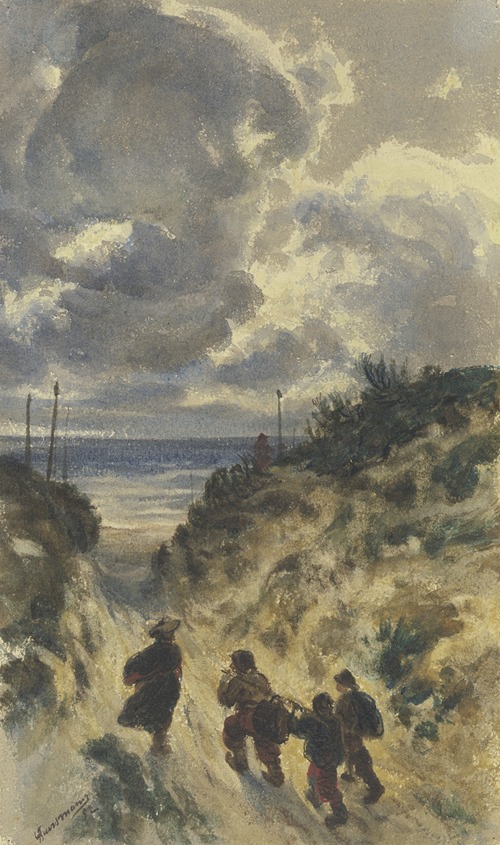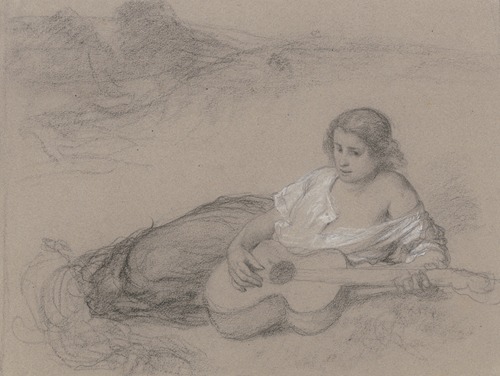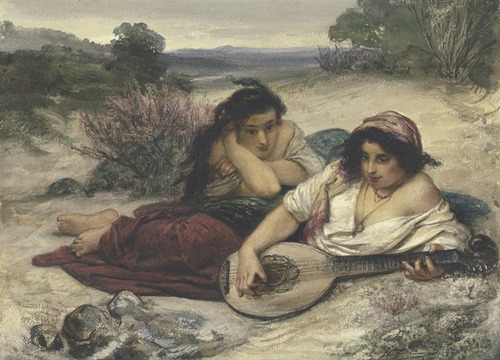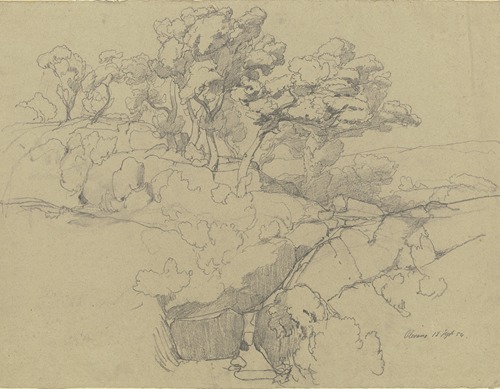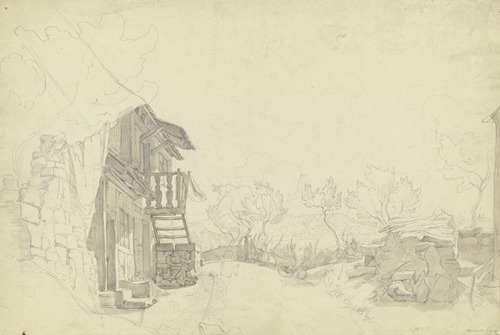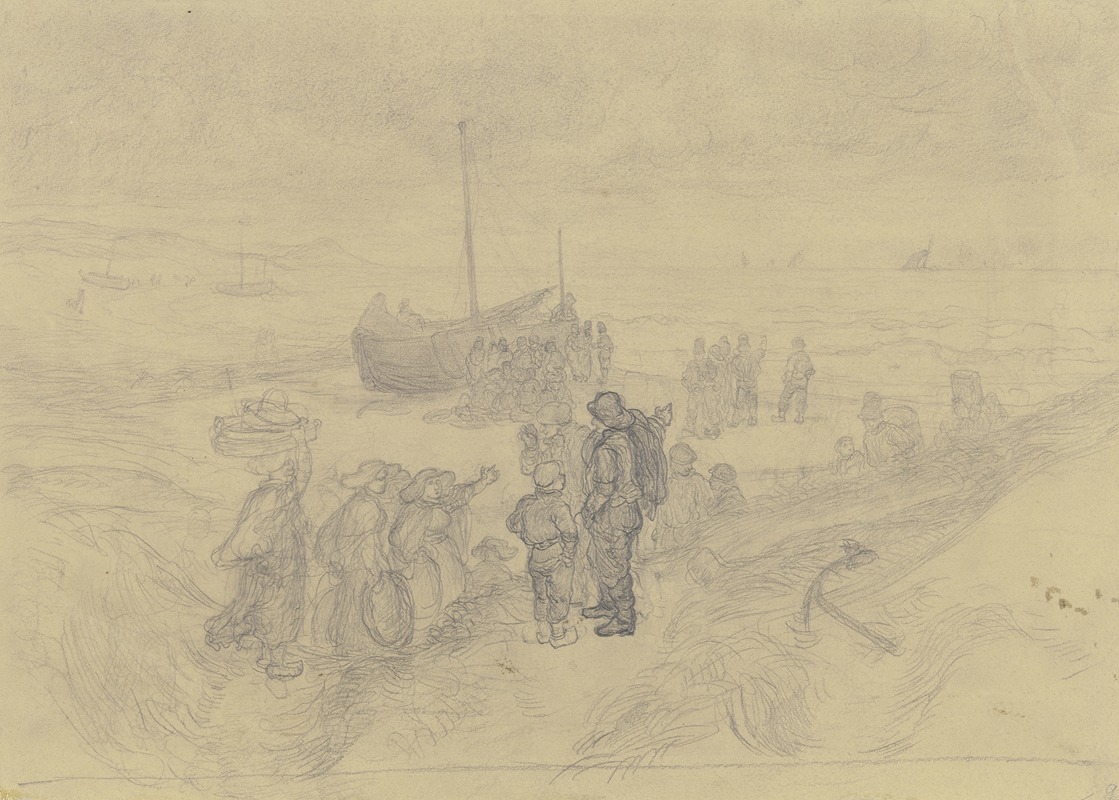
Friedrich Karl Hausmann was a German painter, local historian and director of the drawing academy in Hanau.
The son of goldsmith and engraver Ernst Wilhelm Hausmann, Friedrich Karl Hausmann began his studies at the Hanau Drawing Academy at the early age of twelve, where he was initially trained as a draftsman and then as a painter by his academic teacher Theodor Pélissier. 1848-51 ABA Antwerp together with his childhood friend Georg Cornicelius at Laurentius Dykmans and Gustaaf Wappers On September 2, 1848, he went with his friend and fellow student Georg Cornicelius to the Antwerp Academy of Art, where they studied with Laurentius Dykmans and Gustave Wappers. However, they soon left due to differing views on the Antwerp School. During this time, he developed a friendship with Anselm Feuerbach, with whom he later also worked in Paris. He initially turned to the Netherlands to study paintings by Rembrandt and other Dutch painters in Amsterdam and The Hague, which he copied on sketchbooks and canvas. In Scheveningen, he was impressed by the sea and its special colors, experiences that were later often reflected in his paintings. In 1851, he moved to Paris, where he worked with the brothers Gustav and Louis Spangenberg, Wilhelm Lindenschmit and Rudolf Hennberg in Thomas Couture's studio and continued his studies there. In 1854, he moved to Italy, where he created landscape paintings flooded with air and light in Olevano and Tivoli. But just one year later, he returned to Germany and settled in Frankfurt am Main from 1855 to 1864 as a freelance painter. He used the sketches and studies he had made during his travels to compose new paintings, but also created drawings and templates for Bernhard Dondorf's (1809-1902) lithographic institute on Saalgasse in Frankfurt to secure his income. In 1857, he was a co-founder of the Frankfurter Künstlergesellschaft (Frankfurt Artists' Society).
When the position of academy inspector in Hanau became vacant after Pélissier's death, he applied for the position and was appointed to the Hanau Drawing Academy in 1864. He was appointed director in 1870, but it took another fifteen years before he received the title of professor. He transformed the private drawing school into the vocational school for precious metal craftsmen that still exists today. Since his teaching duties in Hanau left him little time, only a few paintings remain from his hand during these years, among which the new ceiling painting in Philippsruhe Castle from 1880 would probably stand out. He trained a large number of capable students in Hanau, some of whom later became outstanding artists themselves. Under his direction, the new building of the drawing academy on Akademiestraße was built, which is still in use today. It was a special honor for him to be commissioned by the Prussian government in 1867 to create a study on the development of German art in comparison to French art at the World's Fair in Paris. His paintings can be found, among other places, in the Hamburger Kunsthalle, the Städel in Frankfurt and the Historisches Museum Hanau.
In 1871, he joined the Hanau History Association and, as a curator, promoted systematic excavations, restorations and graphic documentations of the finds from numerous excavations by the association in the Hanau area. His drawings of Franconian grave finds near Hanau-Mittelbuchen and Roman grave finds in Hanau and Erlensee-Rückingen were outstanding.
He was underestimated as an artist throughout his life and only became known to a wider audience two decades after his death at the Century Exhibition of German Art in the National Gallery in Berlin. Since his painting style only became fashionable half a century later, the artist was now unduly glorified and his career was almost seen as an artistic tragedy. A street in Hanau is named after Hausmann.

